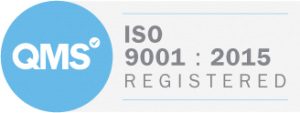Employee Ownership Top 50 2020
The UK’s 50 largest employee owned companies in 2020.
RM2 does the research for the Employee Ownership Top 50, a list of the largest 50 private employee-owned companies in the UK. RM2 publishes the list in a partnership with the Employee Ownership Association (EOA). You can download the infographic by clicking the link below.
Key facts for 2020
- There are five new entrants: Greenwich Leisure, Seetec Business Technology Centre, Gemporia Partnership, Allford Hall Monaghan Morris and First Community Health & Care.
- Combined sales for the Top 50 is £20.1 billion, which is up 4.3% on a like-for-like basis.
- Total employees for the Top 50 is 178,000 which is up 1.0% on a like-for-like basis.
- The median change in operating profit for the Top 50 is plus 5.0%.
- The mean increase in productivity, defined as value added per employee, is 6.9% on a like-for-like basis.
- 66% of the companies in the Top 50 have no debt.
- The number of employees needed to qualify for inclusion in the Top 50 has gone down slightly to 378. Last year it was 403. In 2014, when the Top 50 list was first published, it was 143.
- “like for like” means that we compare each of the 50 companies on this year’s list against its own prior year results only if it appeared on last year’s list. This is to avoid new entrants distorting the comparisons.
Ground Rules
Criteria for inclusion: Companies must be incorporated in the UK as companies limited by shares, unquoted, independent and at least 25% owned by employees on a broad basis. Companies may have non-UK holding companies if the UK companies are operationally independent and the non-UK holding companies are at least 75% owned by employees. Shares from joint ventures and associate companies are excluded.
Criteria for exclusion: The list does not cover quoted companies, LLPs or partnerships. In businesses constituted as industrial and provident societies, companies limited by guarantee and community interest companies, employee ownership can be hard to ascertain from published sources so, in such cases, we have sometimes relied on a business’s membership of EOA as evidence of employee ownership.
Data collection: Several sources were used, including internet searches, lists of EOA members, Companies House searches and professional advisers active in the sector. Figures for employee numbers and revenues are taken from companies’ latest published annual accounts at Companies House. Estimates of the percentage of employee ownership in each company were sourced from the companies’ own websites or EOA or press reports, corroborated where possible from annual returns.
Disclaimer: Employee ownership data is not systematically published by companies so the list may not be accurate. Nominations for inclusion and corrections should be sent to operations@rm2.co.uk
Definition of terms: Operating profit or EBITDA is defined as earnings before interest, tax, depreciation and amortization. Productivity is defined as value added per employee. Value added is defined as EBITDA plus total wages. Debt is defined as the sum of bank loans and overdrafts, other short term finances and other long term finances minus cash.



